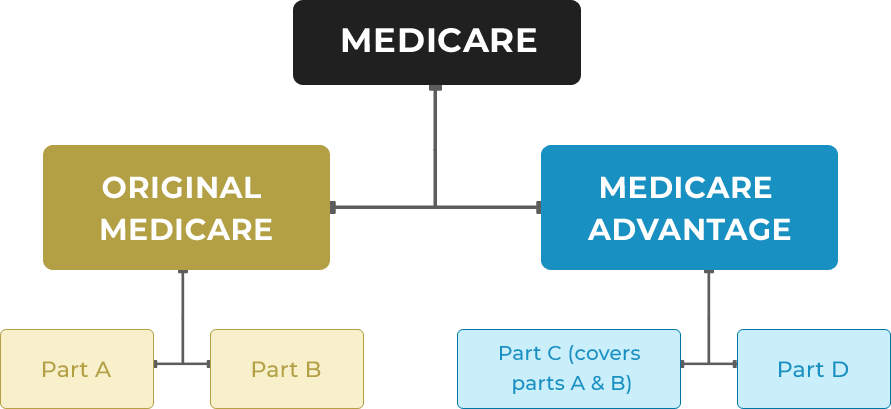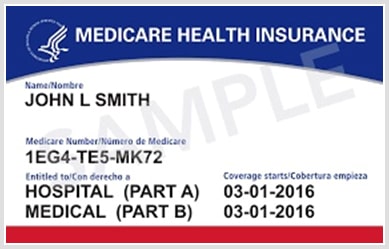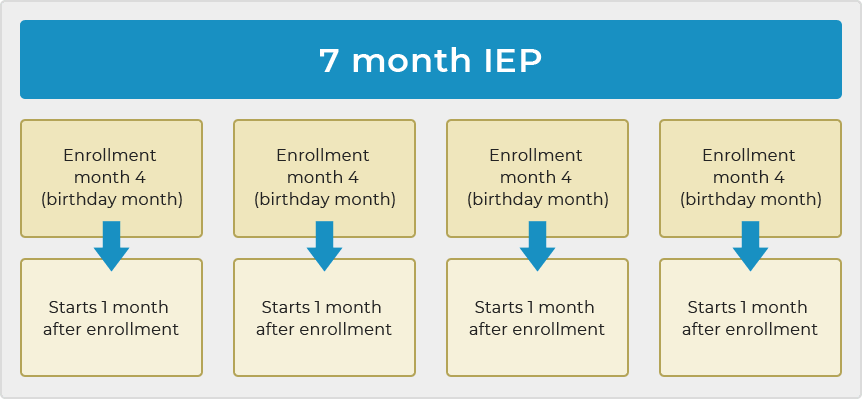Medicare for Dummies
I once had a client who confided, “I always thought I was a pretty smart person until I had to figure out what to do about Medicare.”
I find this sentiment is pretty common among people who are trying to make Medicare decisions.
While you are no “dummy,” understanding the Medicare system does take some understanding and careful explanation to understand how it works, how it can help you meet your healthcare needs, what Medicare plan is best for your situation, and what you need to do to get enrolled.
In this article, we will carefully explain and explore all of these questions and explain everything you need to know about Medicare and how to make it work for you.
Medicare is a word that you have probably heard tossed around your entire life. Every political season it gets bandied about between the candidates, and you often hear about it on commercials or news stories.
But until you start to get closer to needing Medicare, it may not be a program that you have completely understood. Today we are going to give you a thorough education in the Medicare program so that you know everything you need to know.
It’s important to fully understand this federal program because Medicare can be an extremely useful tool for you as you take care of your healthcare needs as you age. the right knowledge and understanding, you will be able to maximize the benefits of this program in your life. We will start with all the basics so that you will have all the right information to make the best decisions in using Medicare to meet your healthcare needs.
What Is Medicare?
First, what exactly is Medicare? Let’s start by outlining what Medicare is and why the program was designed.
Medicare is essentially a health insurance program, established by the United States government in 1965. It was created and developed to help people in the aging population find affordable and adequate healthcare insurance.

The program gives health care coverage (health insurance) for every U.S. citizen who is over age 65, or for those under 65 that receive Social Security Disability Insurance (SSDI) or those that have an end-stage renal disease (ERSD).
Medicare was designed because all of the people in these groups—people over 65, and those with disabilities or kidney disease—were having a very hard time getting adequate health insurance at affordable rates.
Simply put, the private insurance sector did not want to insure them. It wasn’t a good return for traditional insurance carriers because of the increased use of healthcare resources for these groups. Their age, their disabilities, or their particular illnesses, make them more difficult or impossible to insure.
Simply put, the private insurance sector did not want to insure them. It wasn’t a good return for traditional insurance carriers because of the increased use of healthcare resources for these groups. Their age, their disabilities, or their particular illnesses, make them more difficult or impossible to insure.
In order to address this serious social problem and make health insurance available to people regardless of their age or disability, the U.S. federal government created the Medicare program. In many ways, it serves as a kind of social safety net.
The Medicare program is paid for in part by the Social Security and Medicare payroll taxes which you paid on your income throughout your career and part with funds from the federal budget. In addition, each person enrolled in Medicare must pay a premium to use the program and this pays for a portion of the cost as well.
How Does Medicare Work?

Parts A, B, C, and D. When you sign up for
Medicare, you sign up for the Parts that best
meet your needs.
Each Part covers different medical costs. We will
go through each Part individually so you can
understand the coverages provided and how they
will work for you.
First, you need to understand that there are two main categories of Medicare coverage: Original Medicare and Medicare Advantage.

Original Medicare is a traditional fee-for-service program offered directly through the federal
government. Medicare Advantage is a Medicare plan that is administered by a private health insurance company that contracts with the federal government to provide healthcare coverage.
They each have different advantages and disadvantages, which we will discuss in a moment. For now, you simply need to understand that when you sign up for Medicare you will choose one of these two ways to receive your Medicare benefits.
Now let’s look at what these plans cover. As I previously explained, Medicare is divided into Parts A-D.
The Basics of Medicare Coverage (Parts A – D)
Healthcare costs under Medicare are divided into parts A-D. There are also additional supplemental plans provided by 47 states that we will talk briefly about later.
1.PART A

It pays for hospital bills and costs related to hospital care and medical care in a skilled nursing facility or nursing home.
It also covers the costs of hospice care and home health services.
Any type of inpatient care falls under the coverage provided by Part A, including inpatient medical supplies and prescription drugs you receive while you an inpatient.
If you are homebound it covers physical and occupational therapy; it also covers expenses related to doctor visits, medication and grief counseling for terminally ill patients.
While Medicare Part A covers many hospital-related services, it doesn’t cover every possible inpatient service. Whenever a patient needs a procedure which is not covered, providers are required to inform patients of this and have them sign a release prior to receiving treatment.
This allows patients to opt to pay for the service out-of-pocket or refuse the care.
2.PART B

Medically necessary healthcare services include all the medical care required to diagnose and treat your medical conditions, including doctor visits, lab work, tests, and medical equipment or devices.
Preventive services obviously refer to medical care that you undergo in order to prevent illness, like a flu shot, or healthcare services undergone for early detection, like screenings and routine physicals.
Your coverage for medically necessary services will depend on the Medicare option you choose, but Part B usually covers all preventive services regardless of the plan, but you should always confirm your coverage before having a procedure.
Note that Part B also covers ambulance services, durable medical equipment (DME), outpatient mental health services, second opinions on medical advice, and even a very limited amount of prescription drug coverage.
3.PART C
Part C simply refers to Medicare Advantage Plans. These plans cover both Parts A and B of the Medicare program—both inpatient and outpatient care—and are required to do so by law.
As we will explain later, Part C plans often have less expensive premiums because Medicare Advantage plans have restrictions about where you can receive your medical care and there can be limitations on the type of illnesses covered as well.
Part C plans are run by private insurance companies that contract with the federal government to provide the services. Many times, Part C plans will also include basic dental and vision coverage.
Additionally, most Part C or Medical Advantage Plans also include Part D coverage as part of their Medicare package.
4.PART D
Part D covers prescription drugs for Medicare recipients. Part D plans are only available through private insurance parties. Individuals can join a standalone Part D Plan or Prescription Drug Plan (PDP) if they have chosen Original Medicare or they can sign up for a Medicare Advantage Plan (Part C) in which Part D is included.
Each insurance company will provide a list of approved prescription drugs covered under their particular plan. When you choose your plan it is important to know what your prescription needs are and cross-reference that list with available Part D plans, making sure that the supplement plan you choose covers the medicine you need.
Keep in mind that Part D only covers a certain number of drugs and new drugs are researched, developed, and manufactured every day. It can take some time for these drugs to get on the Part D lists.
Prescription drugs are arranged in tiers. When you need a top-tier drug, which is often a new or very expensive medicine, it will often increase your premium, which may already be high.
Carefully determine if a Part D plan is the right one for you, one that will be effective and affordable, given your current health and prescription needs.
We suggest that you work out your Part D plan with a qualified Medicare insurance agent, to help you understand your options fully.
With this information in mind, let’s look at the chart again to see how these Parts fit into the broad Medicare categories of Original Medicare and Medicare Advantage:

Keep in mind if you choose Original Medicare you can get an additional and separate Part D plan for an additional premium.

Therefore, when you select your plan it can be very valuable to know what your current prescriptions are and then check that list with the available Part D plans. In this way, you can ensure that your Advantage plan covers everything you need.
Keep in mind that the Part D section of your Advantage plan only covers a certain number of drugs. As you know, new drugs are researched, developed, and manufactured every day. It is a constantly advancing and changing field. When new drugs are developed, it can take some time for these drugs to appear on your plan’s Part D list.
Prescription drugs are generally arranged in tiers. If you are a patient in need of a top-tier drug, which is often a newly-developed or very expensive medicine to manufacture, it’s possible that this will increase your premium, or you may have a larger co-pay than you are used to.
Each insurance carrier will handle this situation differently. When you are evaluating which Medicare Advantage plan is best for you, find out how each carrier designs their prescription drug coverage. We suggest that you always work out your strategy according to your own particular healthcare needs with a licensed Medicare insurance agent. They will be able to help you fully understand all of your options.
Medicare Options Explained by Expert at IPA
Differences Between Original Medicare and Medicare Advantage
As you decide which Medicare plan is right for you, it is important to understand your options completely, and then choose your coverage carefully. How you choose to receive your benefits—either through Original Medicare or through a Medicare Advantage plan—affects where you can go to receive your health care and your out-of-pocket costs.
For example, with Original Medicare, you are covered to go to nearly all doctors and hospitals in the country. Medicare Advantage Plans, on the other hand, usually have network restrictions, meaning that you are limited or restricted in the doctors and hospitals you can use, as determined by your individual insurance plan.
However, because of these restrictions, Medicare Advantage premiums are generally much lower than Original Medicare premiums and the out-of-pocket costs are lower. With Original Medicare, you are responsible for your premiums, a deductible, as well as a co-pay of 20% of all your medical costs. With Medicare Advantage, you pay your premium, but usually, don’t have other out-of-pocket costs. The following chart can help you see the costs more clearly:
| YOU CAN ENROLL ANYTIME IN: | |
|---|---|
| Part A premium | Most people don’t pay a monthly premium for Part A. If you buy Part A, you’ll pay up to $437 each month. If you paid Medicare taxes for less than 30 quarters, the standard Part A premium is $437. If you paid Medicare taxes for 30-39 quarters, the standard Part A premium is $240. |
| Part A hospital inpatient deductible and coinsurance |
You pay:
|
| Part B premium | The standard Part B premium amount is $135.50 (or higher depending on your income). |
| Part B deductible and coinsurance |
$185 per year. After your deductible is met, you typically pay 20% of the Medicare-approved amount for most doctor services |
| Part C premium | The Part C monthly premium varies by plan. |
| Part D premium | The Part D monthly premium varies by plan. |
Another difference between the two categories of Medicare is that most Medicare Advantage plans include Part D as well as other benefits such as dental and vision plans. These options are not available through Original Medicare.
Are you Required to Sign Up for Medicare?
You don’t have to sign up for Medicare when you turn 65, but if you don’t you will forfeit all your Social Security benefits. This is not an acceptable consequence for most people, so most enroll in Medicare. This requirement is only for Medicare Part A in order to keep your Social Security benefits. You can opt to not enroll in Part B which has a premium.

When you turn 65, if you are already receiving Social Security benefits, you are automatically enrolled in Parts A and B. Your card is sent to you through the mail three months before you turn 65.
When you receive your card, if you want to decline coverage of Part B, just follow the instructions that come with the card. Be aware that if you decide to enroll in Part B later, you will pay a lifetime penalty every month.
If you are 65, but not receiving Social Security benefits yet, you will need to sign up for Medicare. This can be done online through the Social Security Administration.
Once you are enrolled in Medicare Part A and B, you can then switch your plan to a Medicare Advantage Plan (Part C) if you would prefer this option for your health care insurance.
When Does Medicare Start?

The only exception to this is if your birthday falls on the 1st day of the month, then your coverage will start the month previous.
If you have to enroll in Medicare because you are not receiving Social Security benefits, then your coverage starts depending on when you signed up.
When you enroll in Medicare there is a very specific “Initial Enrollment Period” in which you can sign up. Your Initial Enrollment Period (IEP) is a seven-month period surrounding your 65th birthday.
The IEP is the three months before your birthday month, the month of your birthday, and the three months after your birthday month. (Unless your birthday falls on the 1st day of the month. In that case, everything moves up one month.) You can enroll in Medicare anytime during this IEP, seven-month period.
Your coverage starts depending on which month you sign up during the IEP.
See the chart below.
- If you enroll in Medicare during the first three months of your IEP (three months before
your 65th birthday), coverage starts on the first day of your birthday month. - If you enroll during your birthday month, Medicare starts the first day of the month following the month of enrollment.
- If you enroll during the month after your birthday, your coverage will start the second month following the month of enrollment.
- If you enroll during the sixth or seventh month of your IEP (2-3 months after your 65th birthday), coverage begins the third month following the month of enrollment.

The following example may help as well: Let’s say you turn 65 in January. This following chart shows when you can enroll and when your coverage would start.
| Month of IEP | YOU CAN ENROLL ANYTIME IN: | YOUR COVERAGE BEGINS: |
|---|---|---|
| 1 | October | January 1st |
| 2 | November | January 1st |
| 3 | December | January 1st |
| 4 | January | February 1st |
| 5 | February | April 1st |
| 6 | March | May 1st |
| 7 | April | June 1st |
Keep in mind that if your birthday falls on the first day of the month, your IEP moves up one month.
How Do I Make Sure I Have Enough Health Coverage?
If you find that Parts A and B leave some gaps in your healthcare insurance coverage, especially when it comes to the 20% co-payment requirement, there are a few different ways to fill these gaps and get help with your medical costs.

For many people, Medicare Advantage offers the most healthcare coverage for the best price.
However, if you want to select Original Medicare for healthcare coverage and want a way to offset some of the out-of-pocket costs, it is possible to obtain a MediGap policy.
MediGap is supplemental insurance offered by most states. In exchange for an additional premium, MediGap policies provide additional insurance options through private insurance companies to help fill the gaps in Original Medicare.
Private insurance carriers offer these supplemental plans under specific government regulations. For example, each carrier that provides MediGap policies is required to offer up to 10 different MediGap plans to choose from: A, B, C, D, F, G, K, L, M, and N. (Note that the plans in Wisconsin, Massachusetts, and Minnesota go by different names.)
Each type of MediGap policy offers a different set of benefits and you can find one that best meets your needs. Of course, depending on the plan you choose, the insurance carrier, and the benefits offered, premium prices will vary greatly.
Why Should I Consider MediGap?
Imagine for a moment that you have chosen Original Medicare and are paying a separate premium for Part D.
This means that you have coverage for hospital visits and stays, emergencies, doctor visits, lab work, and preventive care, plus you have a list of drugs that are covered.
The problem is that you still have to meet your deductible and they are responsible for a 20% co-payment for any services or care that you receive.
If you have to have hip replacement surgery, it can cost up to $125,000. Paying 20% of these medical bills will add up to $25,000 just for the surgery. This will not include any rehabilitation or therapy or follow-up care you require.
If you have a Medigap policy, it can offset these out-of-pocket costs and eliminate much of the stress that comes from large medical bills. The reality is that the older you get, the more you will use healthcare resources. Make sure you have adequate coverage for those possible expenses.
How Do I Get Started?

To begin, determine if Original Medicare or Medicare Advantage is the right option for you.
How much money do you want to pay out-of-pocket? How big is your budget for premiums and co-payments? Do you care about getting healthcare services anywhere or are you fine getting your care in a defined service area?
Think about your lifestyle and your budget. As you make your decision, remember that there are lots of options available to get you the personalized coverage you need, including Medicare Advantage Plans, Prescription Drug Plans, and Medigap policies.
Keep in mind that while there are a number of important rules and regulations that apply to the enrollment and getting started in Medicare, many people are ready and able to help you navigate these procedures, including licensed and experience Medicare insurance agents.
At Insurance Professional of Arizona, we have a team of brokers that are experts in Medicare insurance. We have years of expertise and knowledge and we understand every aspect of the Medicare enrollment process.
We are always happy to answer any questions that you might have about the process, make sure you have the right amount of coverage, and we always ensure that our clients have the best coverage at the most affordable and reasonable prices.
Being independent agents means that we can shop lots of competing health insurance companies to get the most competitive policies with extra benefits.
Please contact us for help. We can assess your healthcare insurance needs and then give you a list of options to meet those. We will walk you, step-by-step, through the enrollment process so that you have the benefits you need without ever paying any penalties.
To get started, just call us or fill out the contact form on our website. At IPA, our experienced and professional Medicare agents are here to help you successfully navigate the Medicare program and get the health insurance policy that’s best for you!
We’re here to help! Call us today.

Share your thoughts
Leave your comments